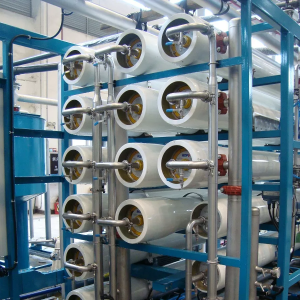| Esmil Process Systems Ltd |

| Registration Date | 15 Oct 2023 |
| Revision Date | 15 Oct 2023 |
| Share |
Environment Water and Wastewater
Nanofiltration Plant
Nano filtration is a physical separation process based on the same principles as Reverse Osmosis (RO) wherein applied feed pressure is used to separate a range of dissolved salts and molecules from the feed solution. Typically, nanofiltration membranes reject those species greater than 1 nm (10 Angstrom units) in diameter. Organic molecules in the range of 200 – 400 g/mol are rejected in the NF process, along with inorganic divalent anions or higher (90 – 98% rejection rate). Monovalent anions are rejected typically in the range of 20 – 80% of feed concentration. Actual rejection of salts is dependant on the physico-chemical construction of the membrane polymers. Nanofiltration (NF) systems reject polysaccharides, proteins, amino acids, bacteria and viruses as well as organic colour without generating undesirable chlorinated hydrocarbons and trihalomethanes (THM). Typical applications include removal of colour and total organic carbon (TOC) from surface water, removal of hardness or radium from well water, overall reduction of total dissolved solids (TDS) and the separation of organic from inorganic matter in specialty food and wastewater applications. Nanofiltration membranes are also widely used for desalting applications such as cheese whey de-brining, and dyestuffs separation from the feed and letting brine. NF membranes are widely used for removal of heavy metals from waste water which would otherwise need expensive, complex chemical treatments and sludge handling. Transmembrane pressures for NF applications are typically 3.5 – 16 bar(g), significantly lower than equivalent RO applications rendering NF processes more energy efficient on a mass treated basis.